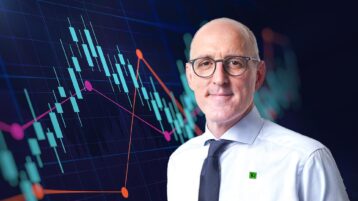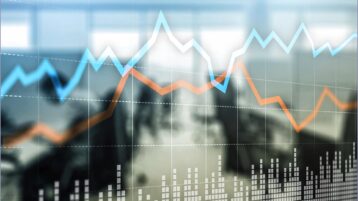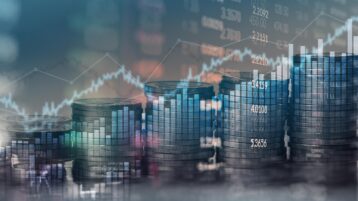Despite stock markets trading at all-time highs, there are increasing signs investors are anxious over the strength of the rally. Anthony Okolie speaks with Jimmy Xu, Portfolio Manager, TD Asset Management, about what a rising fear index is signaling about equity market risks.
Despite fears over the Delta variant, red hot inflation and future central bank policy, stock markets have been on a tear lately, with markets trading at all time highs. But take a look at this next chart. It's a chart of the S&P 500 SKEW Index, which may be indicating increasing investor fear of a potential market downturn. With more on this is Jimmy Xu. He's a Portfolio Manager at TD Asset Management. Jimmy, can you help explain what this chart is and what it means?
Sure. Hi, Anthony. Good to see you. So one of the things that we've been watching very closely over the last few weeks is the SKEW on the S&P 500. What this chart shows us is that when SKEW is high, like it is now, it tells us that the market is concerned about a potential negative move, an extreme negative move in the market over the next 3 months. And what's really interesting here is that the SKEW right now is the highest it's ever been over the last 2 years, higher than when it was during the pandemic, which is quite odd considering that we're trading at basically at all time highs, yet the market's very concerned of what's coming up next over the next 3 months.
OK, so why is it skewing so high then?
I think some of that is certainly justified, given the risks out there. So, for example, with the Federal Reserve, I think it's a foregone conclusion that they will taper their bond purchasing program sometime either later this year or early next year. What is unclear is how aggressive will they be with the tapering. So if they taper faster than the market expectations, it could mean that interest rates may rise faster or sooner than what the market has anticipated, and this could spell the start of the end of this current bull market. And second, of course, the Delta virus or any other variants that pop up between now and the rest of the winter. We already see in countries with relatively low vaccination rates another wave of COVID-19 infections and that has impacted negatively on mobility and on consumer confidence. And this becomes more widespread over the fall and into the winter. This could be a pretty big speed bump to the recovery. And finally, political risks are rising. There's an election in Canada now, which could result in higher taxes in some industries. And in the US, Biden resumed their talks on higher corporate tax rates in the US as well, something the market has really forgotten over the summer. So when you put all these things together, I think it's certainly warranted that we should be a little bit more cautious going into the fall. And this is what the SKEW index is telling us.
Now, can you talk about the similarities between the SKEW index and the VIX or the Volatility Index?
Yeah, that's a really good question. SKEW and VIX are really telling us different things. So what VIX index tells us is what the market expects the S&P 500 to move over the next year or cycle. For example, if the VIX is, let's say, 15%, then the market anticipates the S&P 500 to move within +/-15% over the next year in normal circumstances. But when SKEW is high, what it's really telling us is that there's a higher probability of market moves, extremely more negative than what the VIX is telling us. So when SKEW is high, put it in short terms, it means that there's more tail risks in the market and those risks are typically negative.
OK, so given these risks, what are the implications for investors going forward?
We don't typically look at any one single indicator in making investment decisions based on it. But when we think about the totality of what's happening over the last several weeks, whether it's declining mobility, declining consumer confidence, especially in the US, rising the US dollar decline of the value trade, collapse of the real yield. What all of this is telling us, in conjunction with a high SKEW, is that we need to be more cautious going into the fall. So from an investor perspective, while these are quiet markets over the remainder days of the summer, it's really important for them to think about risk management plans and how they plan to manage the portfolio if those risks start to arise in the last parts of this year. And within our portfolios, we started to shift our portfolios towards more quality and even raise a little bit of cash to help our investors insulate from these type of tail risks that could occur.
Jimmy, thank you very much for your time.
My pleasure.



























